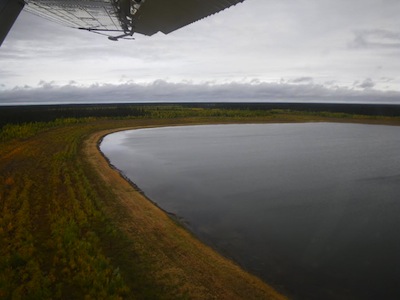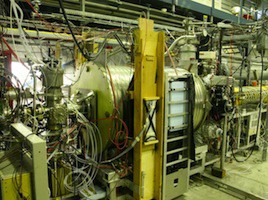
As Twelvemile Lake in Alaska (pictured here) continues to shrink, new permafrost is forming at its edges, especially in places where willow trees change the soil moisture content. However, computer models predict that this new permafrost won’t outlast the century. (Photo credit: Martin Briggs)
As Arctic lakes shrink, new permafrost develops around them, but according to a new study, it’s not expected to last the century.
Researchers looked at a retreating lake in Alaska and saw new permafrost had formed along the old lakebed in areas where willow trees had altered the soil’s moisture and heat content. The new permafrost can prevent water from flowing out of the lake and reduce its rate of shrinking, but it’s not as deep as older permafrost further from the lakes. Computer models predict that rising air temperatures will melt the new permafrost within 70 years.
Original research paper published in the the journal Geophysical Research Letters on March 7, 2014.
Names and affiliations of selected authors

